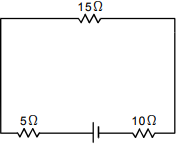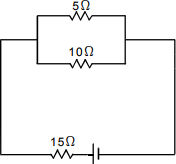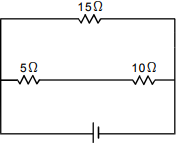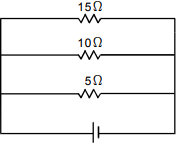Study Guide
Field 093: Integrated Science (Elementary)
Sample Multiple-Choice Questions
Expand All Answers | Collapse All Answers
The following reference material will be available to you during the test:
Periodic TableSubarea 1—FOUNDATIONS OF SCIENTIFIC INQUIRY
Objective 001
Understand the principles and procedures for conducting scientific research.
1. A scientist hypothesizes that polychlorinated biphenyls (PCBs) in the water cause neural developmental abnormalities in salmon. Which of the following experimental designs is most appropriate to test this hypothesis?
- Test for the presence of PCBs in the fatty tissue of salmon with neural defects as compared to salmon with normal neural development.
- Examine several generations of an isolated population of PCB-contaminated salmon for neural defects.
- Compare frequency of neural defects among salmon embryos when half of the group is exposed to PCBs and the other half is not.
- Compare frequency of neural defects in salmon from PCB-contaminated waters to frequency of neural defects in salmon from PCB-free waters.
- Enter to expand or collapse answer.Answer expanded
- Correct Response: C.
Subarea 2—LIFE SCIENCE
Objective 006
Understand cell structure and function.
2. During the nineteenth century, scientists developed several principles to describe cells. These principles developed into cell theory. Which of the following are fundamental principles of cell theory?
- Cells are the basic living unit of organization and arise from pre-existing cells.
- Cells have specialized structures, and cell function is different in plant and animal cells.
- Cells replicate through a process of cell division and can only be small due to physical limitations.
- Organisms grow through an increase in the number of cells and all cells are bounded by individual cell walls.
- Enter to expand or collapse answer.Answer expanded
- Correct Response: A.
Objective 008
Understand concepts of heredity and modern genetics.
3. Use the information below to answer the question that follows.
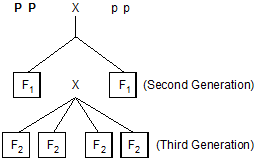
There is a diagram that represents the cross-breeding of pea plants. At the top are 2 upper case Ps on the left and 2 lower case Ps on the right with an X between them. From the X, there is a vertical line that splits to connect to 2 boxes. Both boxes are labeled F sub 1. To the right is the label Second Generation. There is an X between the 2 F sub 1 boxes. A line leads from that X to each of four boxes, all labeled F sub 2. To the right is the label Third Generation.
A pea plant that is homozygous dominant for red flowers (PP) is crossed with a pea plant that is homozygous recessive for white flowers (pp). The offspring of that cross (the F1 generation) are then crossed to create a third generation of pea plants (the F2 generation). What will the phenotypic ratio of red-flower plants to white-flower plants be in the F2 generation?
- 2:2
- 3:1
- 4:0
- 1:3
- Enter to expand or collapse answer.Answer expanded
- Correct Response: B.
Objective 009
Understand evolutionary change of life on Earth.
4. Which of the following sequences best represents an evolutionary progression of animals accepted by most biologists?
- amphibians → fish → marine invertebrates → reptiles → mammals
- marine invertebrates → fish → reptiles → amphibians → mammals
- amphibians → reptiles → marine invertebrates → fish → mammals
- marine invertebrates → fish → amphibians → mammals
- Enter to expand or collapse answer.Answer expanded
- Correct Response: D.
Objective 010
Understand characteristics of ecological systems.
5. The erosion of limestone would have the greatest effect on which of the following biogeochemical cycles?
- the carbon cycle
- the water cycle
- the nitrogen cycle
- the oxygen cycle
- Enter to expand or collapse answer.Answer expanded
- Correct Response: A.
Objective 011
Understand characteristics of human biology.
6. Which of the following common diseases or disorders is caused by the dysfunction of the pancreas?
- diabetes
- cancer
- artherosclerosis
- hypertension
- Enter to expand or collapse answer.Answer expanded
- Correct Response: A.
Subarea 3—EARTH/SPACE SCIENCE
Objective 012
Understand characteristics of the lithosphere and the history and processes of the changing earth.
7. Use the diagram below to answer the question that follows.
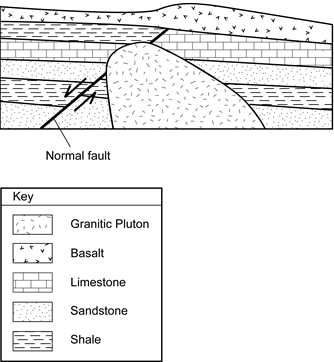
There is a cross-section of a geological formation. Interpreting from the key, the top layer is basalt. There is a diagonal fault through the center of the layers below that. The fault is labeled "Normal fault," with an arrow pointing down to the left of the fault line and an arrow pointing up to the right of the fault line. To the left of the fault, the layer below the basalt is shale. The shale layer is not present to the right of the fault. The next layers on both sides of the fault are, in descending order, limestone, sandstone, shale, and sandstone. The layers are shifted at the fault line. In the center of the diagram is a granite pluton that extends upward through the bottom four layers. Its tip passed through the fault line to touch the uppermost shale layer.
Which of the following conclusions can be drawn about the geological structures labeled in the diagram?
- The limestone stratum is older than the sandstone strata.
- The granitic pluton is younger than the basalt.
- The normal fault is older than the granitic pluton.
- The limestone stratum is younger than the normal fault.
- Enter to expand or collapse answer.Answer expanded
- Correct Response: C.
Objective 013
Understand characteristics of the hydrosphere.
8. The high plains aquifer that stretches from Texas to South Dakota contains vast reserves of ground water. During the last fifty years, however, the water table in this aquifer has dropped dramatically. Which of the following is the most likely explanation for the depletion of this aquifer?
- Precipitation in the region is not sufficient to compensate for the withdrawal of water by farmers and communities.
- Rainfall throughout the region has been much lower on average than during the first half of the twentieth century.
- Cool, wet conditions that existed millions of years ago filled the aquifer and now most precipitation leaves the region as runoff.
- Changes in the ability of the soil to absorb water caused by agricultural development have increased surface water loss through evaporation.
- Enter to expand or collapse answer.Answer expanded
- Correct Response: A.
Objective 014
Understand the earth's atmosphere, weather, and climate.
9. A climatologist reports that the surface temperature of a region of the tropical Pacific Ocean has warmed by several degrees. Which of the following is the most direct consequence of this change in water temperature?
- an increase in the mixing of ocean layers
- a decrease in the density of ocean water
- an increase in the evaporation of ocean water
- a decrease in the convection of air overlying the ocean
- Enter to expand or collapse answer.Answer expanded
- Correct Response: C.
Objective 015
Understand features of the universe and the methods of astronomy.
10. The northern and southern lights, known respectively as the aurora borealis and the aurora australis, are caused by:
- the interaction of high energy particles from the sun with the earth's magnetic field.
- the ionization of gases from the troposphere as they enter regions of extreme cold in the thermosphere.
- the ignition of volatile gases in the ionosphere by ultraviolet radiation from the sun.
- the reflection of visible light from the sun off dust particles in the upper atmosphere.
- Enter to expand or collapse answer.Answer expanded
- Correct Response: A.
Subarea 4—PHYSICAL SCIENCE
Objective 018
Understand the physical properties of matter and the nature of physical changes.
11. Which of the following most accurately describes the evaporation of lake water when exposed to sunlight?
- Heating of the air above the water decreases the relative humidity, allowing increased diffusion of water vapor from the surface of the lake.
- Solar radiation hitting the lake decreases the surface tension of the water, allowing molecules at the surface to break away as water vapor.
- Solar radiation striking the water separates hydrogen atoms from oxygen atoms, creating two gases that diffuse from the water in microscopic bubbles.
- The sun's energy increases motion of the water molecules, allowing some molecules to overcome the attractive forces of the surface molecules and escape as gas.
- Enter to expand or collapse answer.Answer expanded
- Correct Response: D.
Objective 019
Apply knowledge of the ideal gas laws and the kinetic molecular model to explain observable phenomena.
12. Which of the following is best explained by the kinetic molecular model?
- why water in its solid phase exists at a lower temperature than liquid water
- why water takes up more space as it freezes than it does as a liquid
- why the molecular mass of water is equal to the sum of the atomic masses of its component atoms
- why hydrogen and oxygen bond to create water molecules
- Enter to expand or collapse answer.Answer expanded
- Correct Response: A.
Objective 020
Understand the basic concepts of mechanics as applied in real-world contexts.
13. A child is sledding rapidly down a hill. The sled hits a bare spot in the snow and slows dramatically. Which of the following best explains why the child slides forward on the sled when the sled suddenly slows?
- The acceleration of an object is inversely proportional to its mass.
- For every action there is an equal and opposite reaction.
- The force acting on an object is equal to its mass times its rate of acceleration.
- An object in motion continues in motion unless that object experiences a net external force.
- Enter to expand or collapse answer.Answer expanded
- Correct Response: D.
Objective 021
Apply knowledge of electricity, magnets, and electromagnetism.
14. An electric circuit has a 5Ω and a 10Ω resistor connected in series. A 15Ω resistor is added parallel to those resistors. Which of the following diagrams best represents the arrangement of the circuit?
Response A. The 5 ohm resistor is to the left of the power source, the 10 ohm resistor is to the right of the power source, and the 15 ohm resistor is at the top center of the loop.
Response B. The 15 ohm resistor is to the left of the power source. The top of the loop is split, with the 5 ohm resistor at the top of the split and the 10 ohm resistor at the bottom of the split.
Response C. The loop is split horizontally, dividing the rectangle in half. The 15 ohm resistor is at the top of the loop. The 5 ohm resistor and the 10 ohm resistor are on the center line.
Response D. The loop is split twice horizontally, dividing the rectangle into three horizontal areas. The 15 ohm resistor is on the top line, the 10 ohm resistor is on the next line, and the 5 ohm resistor is on the third line.
- Enter to expand or collapse answer.Answer expanded
- Correct Response: C.
Objective 023
Understand the characteristics and behavior of waves, vibrations, and optics.
15. Which of the following properties of a light wave is most closely associated with the physiological sensation of brightness?
- frequency
- speed
- wavelength
- amplitude
- Enter to expand or collapse answer.Answer expanded
- Correct Response: D.
MULTIPLE-SUBAREA PASSAGES
Use the passage below to answer the two questions that follow.
The dwarf lake iris only grows around Lakes Huron and Michigan, and in Michigan, it is found exclusively on the north shores of these lakes. The perennial grows low to the ground and has shallow, creeping rhizomes that produce new fans of leaves at their nodes. In semi-open habitats having partial sun, the dwarf lake iris blooms, producing small blue, lilac, or white flowers. Depending on environmental conditions, seeds are sometimes produced. The seeds are in rounded capsules approximately one-half inch long and are dispersed by ants. Throughout its current range, the dwarf lake iris is threatened as a result of residential development near shorelines and over-collecting of the popular wildflower.
Objective 007
Understand the organization, characteristics, and functions of living things.
16. Which of the following conclusions about the dwarf lake iris can be drawn from the passage?
- The plant will go extinct if not protected by law.
- Dwarf lake irises can reproduce both sexually and asexually.
- The plant produces seeds whenever it flowers.
- The dwarf lake iris cannot survive in forested areas.
- Enter to expand or collapse answer.Answer expanded
- Correct Response: B.
Objective 004
Understand the relationship of science to contemporary, historical, technological, and societal issues.
17. In 1988, the dwarf lake iris was added to the U.S. List of Endangered and Threatened Wildlife and Plants. In which of the following ways will this help preserve the dwarf lake iris?
- by designating dwarf lake iris habitat as undevelopable
- by mandating limits on the use of lawn chemicals on private land where the dwarf lake iris grows
- by providing programs and funding to help protect and restore the species
- by supporting research to identify ways of improving the species' survival in altered habitats
- Enter to expand or collapse answer.Answer expanded
- Correct Response: C.
Use the passage below to answer the three questions that follow.
In 1869, Russian chemist Dmitry Mendeleyev took the 55 known elements and arranged them in rows according to increasing weight and in columns according to similar chemical properties. This method created a table with gaps in the sequence of elements, a fact which caused his contemporaries to ridicule him. Mendeleyev, however, insisted the missing elements existed but had yet to be discovered. Within twenty years, three elements were discovered that matched the properties that Mendeleyev's table had predicted. Gradually, the table of elements became the framework for much of chemical theory and has developed into the periodic table used today.
Objective 003
Understand the nature and history of scientific thought and inquiry.
18. The development of Mendeleyev's Table of the Elements best illustrates how:
- scientific bias can cause researchers to assume the existence of something even though no proof exists.
- circumstance and chance play a significant role in discovering new scientific knowledge.
- scientific methods can be used to discover new knowledge by suggesting a direction for experimentation.
- empirical data and evidence are the only driving forces behind discovering new scientific knowledge.
- Enter to expand or collapse answer.Answer expanded
- Correct Response: C.
Objective 005
Understand interrelationships among the life, physical, and earth/space sciences and among science, mathematics, and technology.
19. Mendeleyev's development of the Table of the Elements reflects which of the following concepts fundamental to math, science, and technology?
- The chaos present in nature can be organized into systems using logic.
- Properties of matter derive from energy levels on the atomic scale.
- Patterns in large-scale phenomena also occur in small-scale phenomena.
- Data can be classified into logical systems that provide new insights.
- Enter to expand or collapse answer.Answer expanded
- Correct Response: D.
Objective 016
Understand the chemical properties of matter.
20. Elements in the same group of the periodic table have similar chemical properties because all elements in the group have the same number of:
- protons.
- neutrons.
- valence electrons.
- atomic orbitals.
- Enter to expand or collapse answer.Answer expanded
- Correct Response: C.
